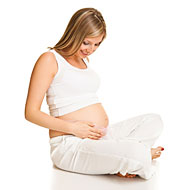Skin Care During Pregnancy
Taking care of your skin is important at all times; however, when you are pregnant, you need to take extra special care of your skin. The skin is the largest organ in the body, and it is semi-permeable, so whatever you apply on your skin also gets absorbed into your body. When you are pregnant, you need to take care of what you consume as well as what you put on your body. Pregnancy hormones often help improve the skin texture of many women.
However, there are some women who may not benefit from this increased hormonal activity. In fact, for such women the pregnancy hormones can have the exact opposite effect. This makes skin care during pregnancy especially important.
Safe skin care during pregnancy requires you to use specific products that are least harmful for your skin. Your doctor will usually be able to point out the products that may not be suitable for your skin, or which may aggravate existing skin conditions. Once you are aware about the safe skin care products during pregnancy, you can make sure you use only those products that may not harm your skin or your baby. To create a regular regime for the best skin care during pregnancy, consult a dermatologist when you get pregnant. Your dermatologist will also help you know about the skin care ingredients to avoid during pregnancy. The skin care regimen that you establish during your pregnancy can be continued till you keep breastfeeding.
Skin changes during pregnancy
There are some specific skin changes that occur during pregnancy. The most common of these is the appearance of stretch marks. These may occur anywhere on the body, but when you are pregnant, these usually occur on the arms, legs, waist, stomach, shoulders, thighs, and breasts. Another common skin condition during pregnancy is melisma or cholesma, also often known as mask of pregnancy. This is caused due to an increased pigmentation. Acne, varicose veins, spider veins, skin tags, linea nigra, dry and itchy skin, and darkening of skin in certain areas are some of the other skin changes that one may experience during pregnancy.
Acne during pregnancy
During pregnancy, a lot of women may experience acne. This is caused when the sebaceous glands in the skin begin over producing sebum due to the increased hormones. The best way to avoid acne during pregnancy is to maintain a very strict cleansing routine. Clean your face every day, especially when you come back from the outdoors. Also, clean your face before you go to bed. If you wear makeup, use an alcohol free cleanser to wipe your face so that your pores do not get clogged. You can use a fragrance free soap if you experience bouts of nausea. For oily skin, use an astringent after cleansing your skin.
Stretch marks during pregnancy
All women are a little afraid of stretch marks caused due to pregnancy. Almost 90% of women experience stretch marks at some point during their pregnancy. This occurs when the elastin in the skin breaks due to rapid weight gain and weight loss. These are bright red or pink colored stripes running along your skin, and as time passes these become light grey, white or silver. These are usually most prominent on the thighs, abdomen, and breast. Exercising regularly, in order to maintain a healthy weight gain can help prevent formation of stretch marks. Lotions that contain vitamin E and alpha hydroxy acids can also help prevent formation of stretch marks on your skin. Though there is no scientific evidence that these remedies prevent or fade stretch marks, anecdotal evidence suggests that these can be used to benefit the skin during pregnancy.
Pigmentation during pregnancy
Pigmentation is also very common during pregnancy. The hormones released during the time of pregnancy could cause darkening of existing freckles and moles. The freckles may change their appearance, shape and color when you are pregnant. Your nipples and areolas may also become darker. In case you see these freckles and moles changing shape or color, discuss it with your doctor. Usually, these changes that occur to the moles and freckles are permanent in nature. They may be sudden but are not always very drastic.
Linea nigra during pregnancy
Linea nigra occurs only in pregnant women. As your pregnancy progresses, you can see the formation of a dark line that runs from your navel to the pubic area.
This line may always be present on the lower abdomen, but the color darkens due to the increased hormones. For most women, the line would appear in the middle of the pregnancy, just round the fourth to fifth month. There is no treatment for this, but the line will eventually fade after you have given birth.
Cholasma during pregnancy
Cholasma during pregnancy is also known as “mask of pregnancy.” In this condition, dark spots begin to appear on the skin, especially on the face, cheeks and forehead. This is caused due to increased pigmentation triggered off due to the change in secretion of hormones. Mask of pregnancy is very common, and almost 50% of women report this during their pregnancy. To prevent this skin problem, it is important to ensure that you wear proper sunscreen when you step outside. When you are pregnant, an SPF 15 sunscreen is ideal. You may use a higher SPF if you desire. It may also be useful to carry an umbrella when you venture outdoors.
Spider veins during pregnancy
Spider veins are tiny blood vessels that become misshapen. When there is an increase in blood circulation at the time of pregnancy, the blood vessels may branch outwards and appear abnormal. These appear on the chest, upper arms, face, wrists, and neck. To prevent spider veins at the time of pregnancy, consume a lot of vitamin C. If spider veins are hereditary, you may have them regardless of the prevention measures you take. For most women, the spider veins disappear on their own after birth. In case the veins are very unsightly, you may use laser treatment. Explore more about Spider Veins During Pregnancy
Chafing during pregnancy
For most women, chafing during pregnancy can be very painful. As you put on weight during your pregnancy, the thighs come closer together and begin to chafe. When you sweat, the chafing could cause redness and swelling between the thighs. You may also eventually develop fungal infections. The red and moist skin can be prevented by maintaining a healthy weight. Plan your pregnancy in a way that you are at a healthy weight before you become pregnant.
Skin products to be avoided during pregnancy
Some of the skin products to be avoided during pregnancy include:
- Salicylic Acid: Also known as beta hydroxyl acid, this is an ingredient usually found in products for acne treatment and is best avoided during pregnancy.
- Retinol: This is a form of vitamin A, and an ingredient found in most exfoliating lotions and acne creams. Check the labels of your skin care products to see if they contain retinol.
- Parabens: A preservative that is added to improve the shelf life of cosmetics, parabens may be added to a lot of creams and lotions. When you are purchasing cosmetics, ensure that they do not contain this ingredient.
Pregnancy skin care tips
Here are some skin care tips to keep in mind when you are pregnant. It is also always advisable to consult a dermatologist for guidance.
- When you are pregnant, avoid using hair removal creams as these contain chemicals that may affect your skin.
- If you use essential oils, you should avoid using them when you are pregnant. Discuss the use of these essential oils with your doctor or an aroma therapist.
- Some cosmetics may contain lead, which is not healthy for your baby. Lipsticks may contain lead, and therefore, should be avoided. If you are particular about applying lipstick, buy one that does not have lead in it.


